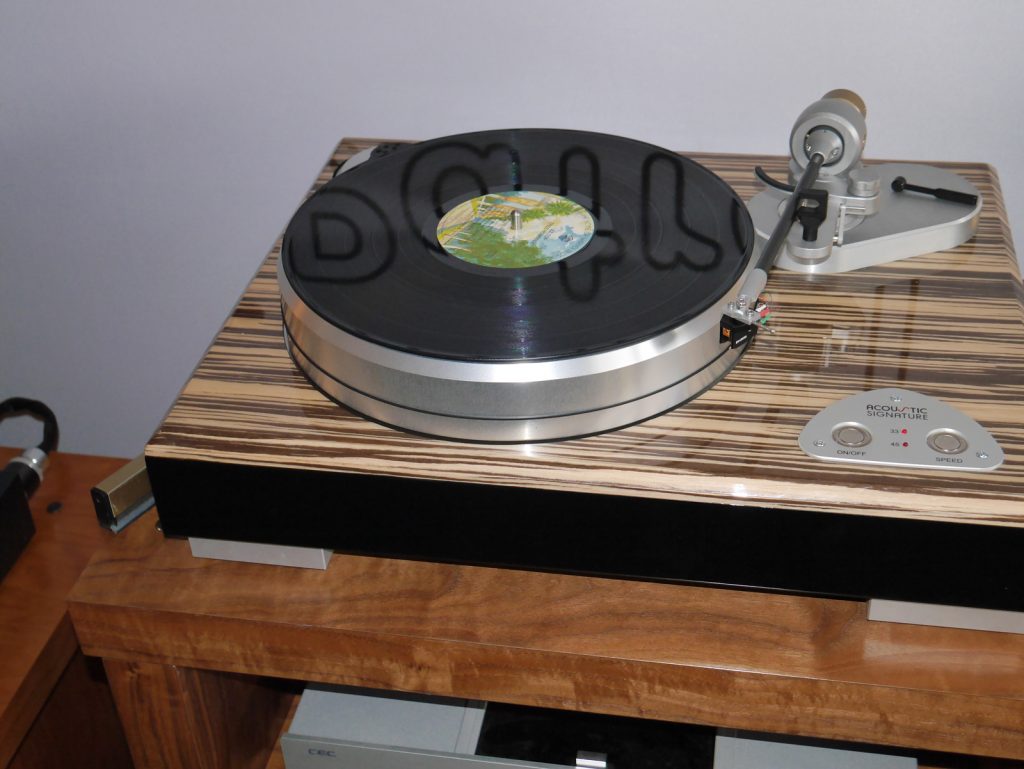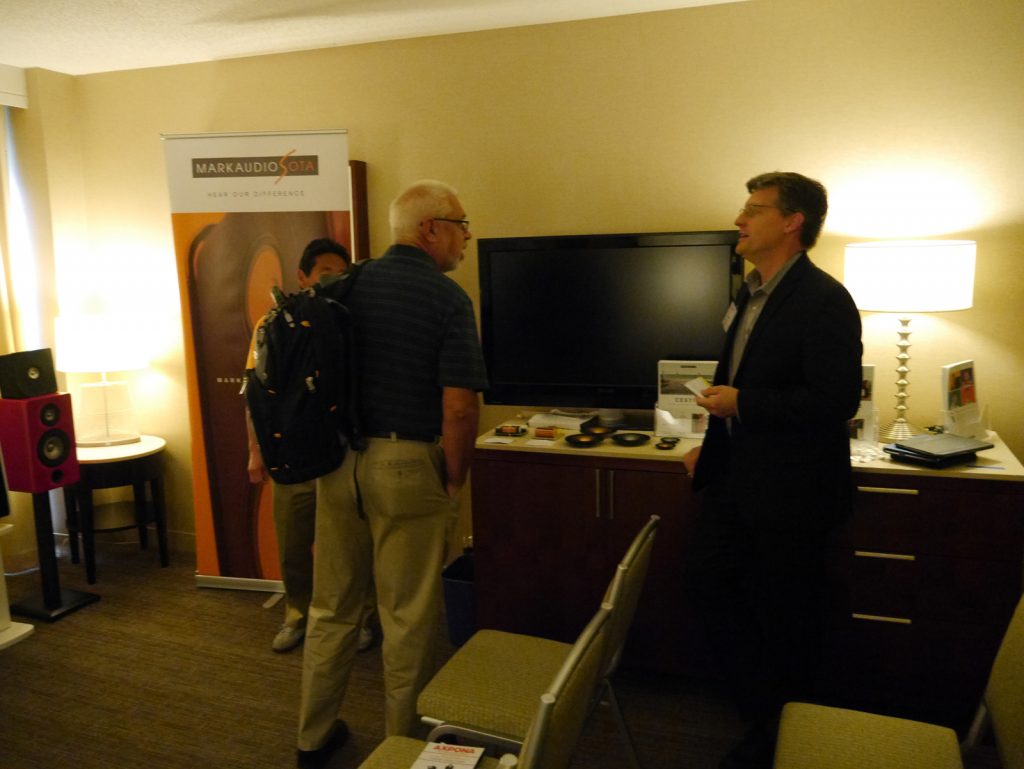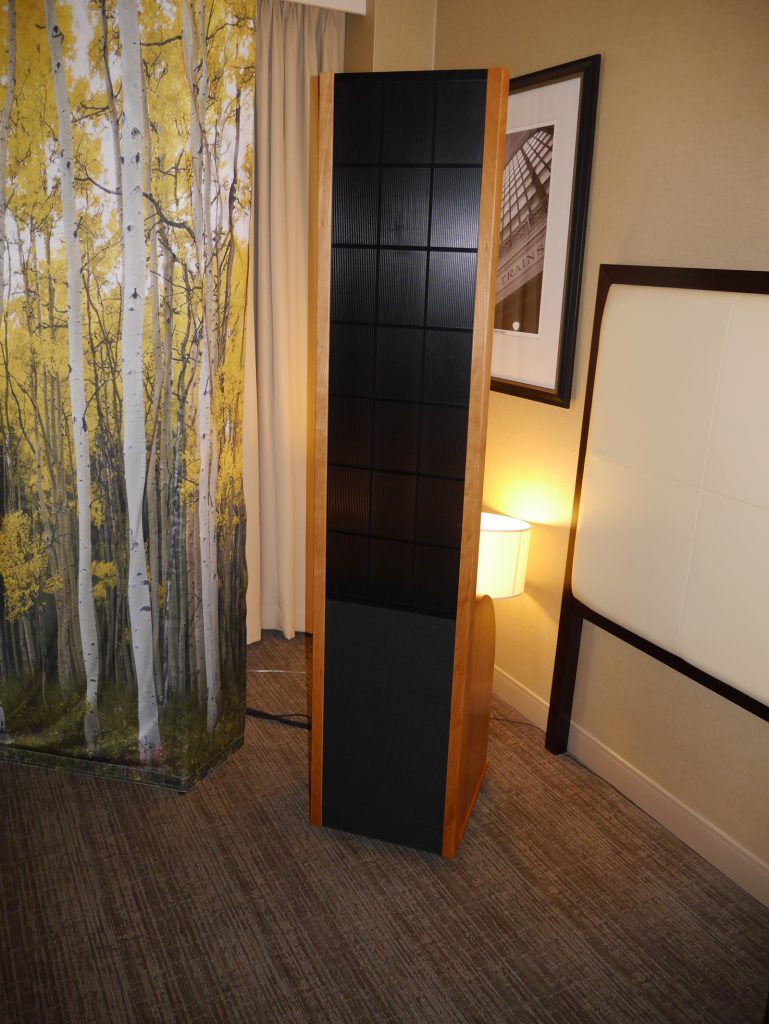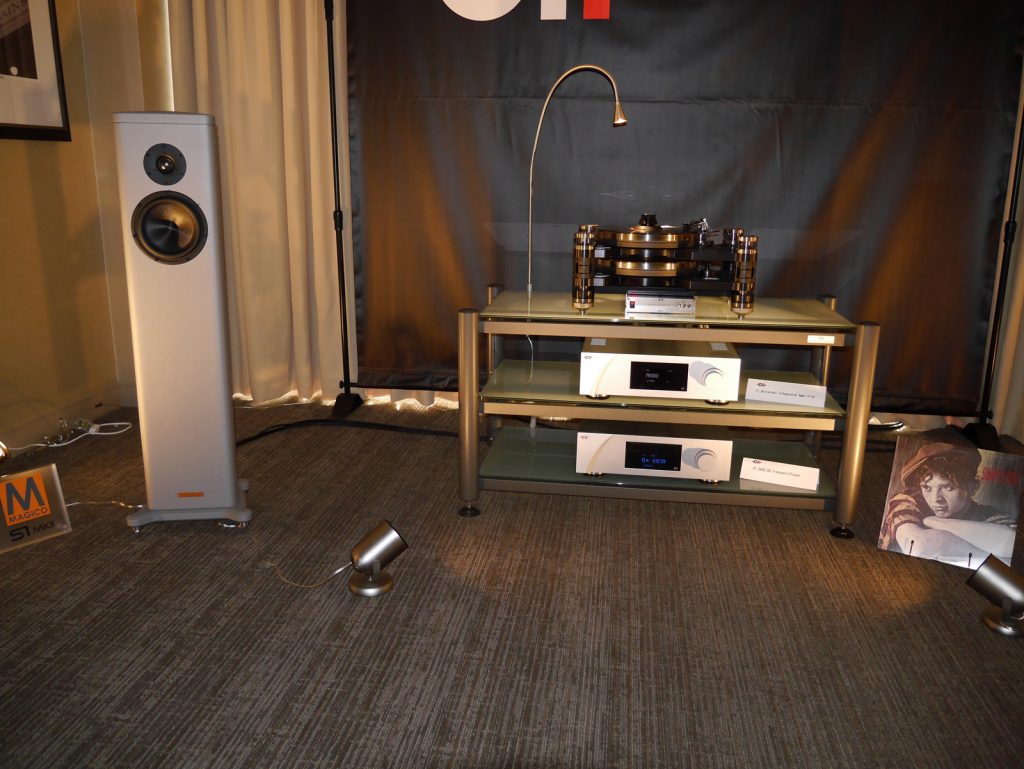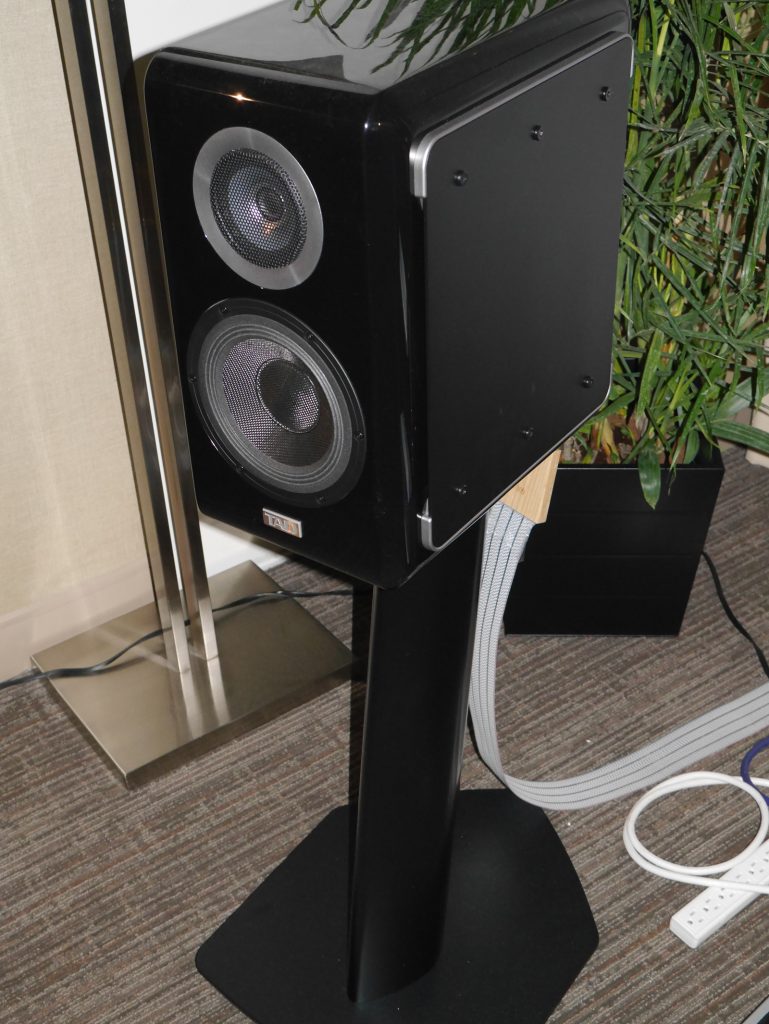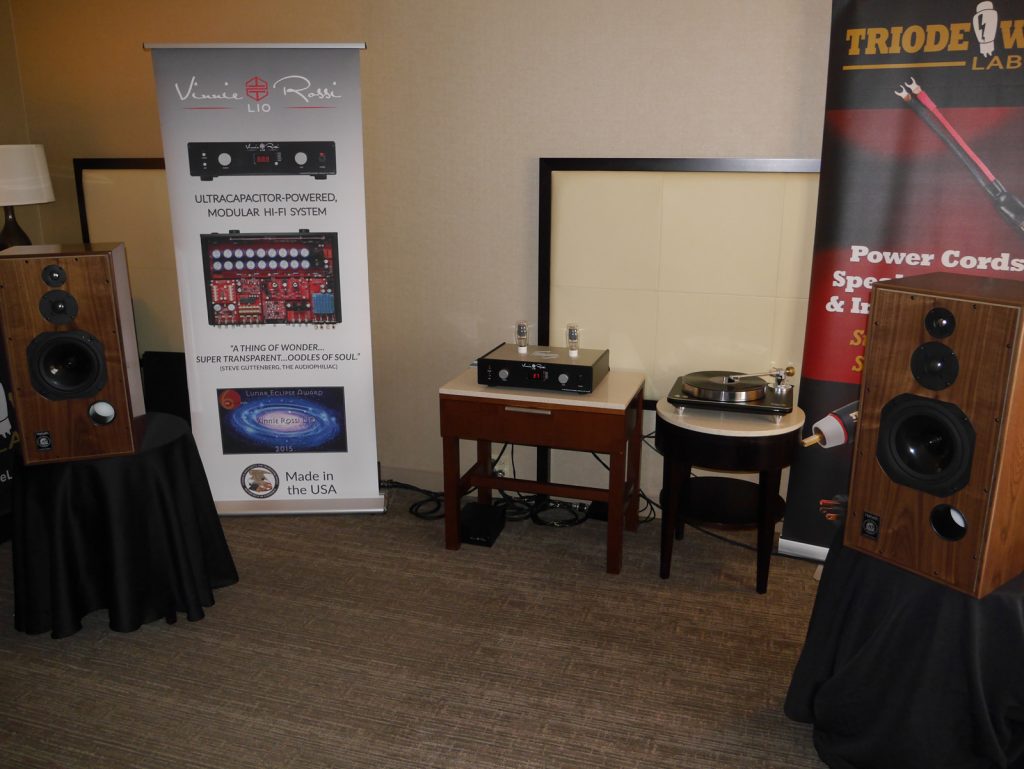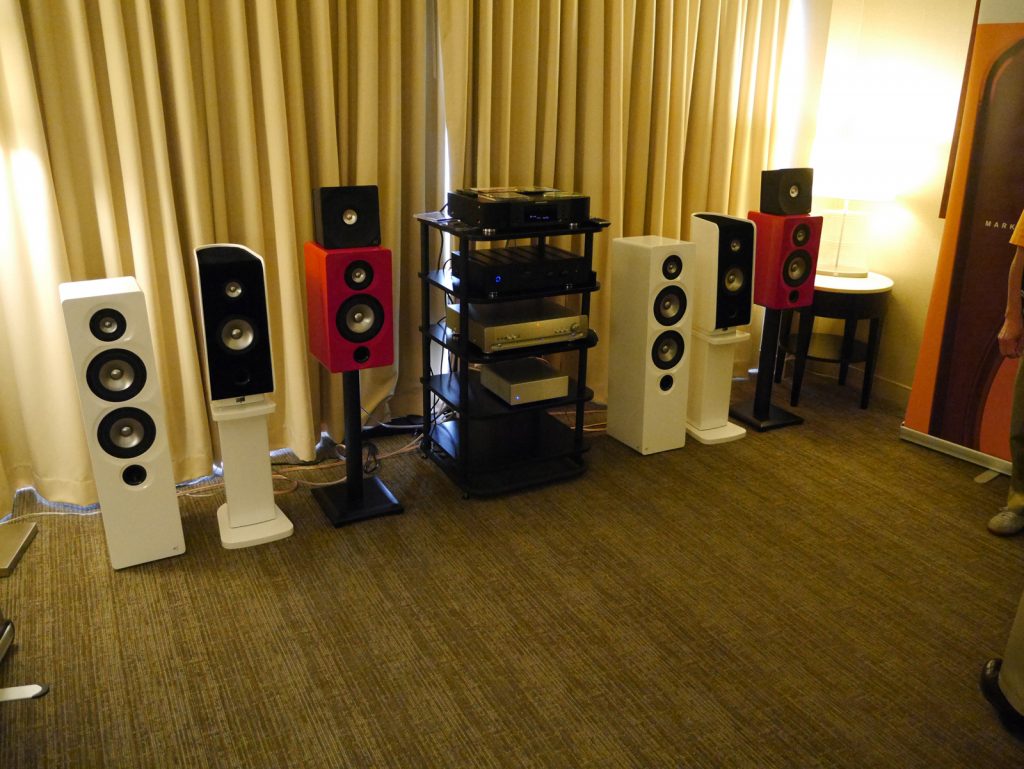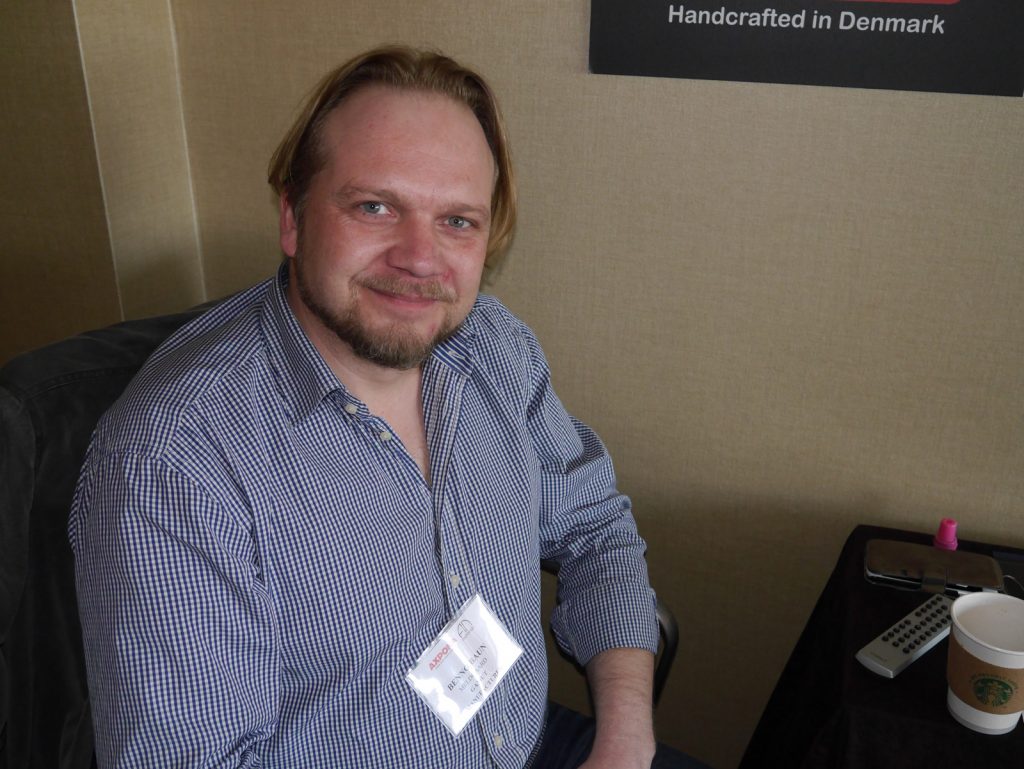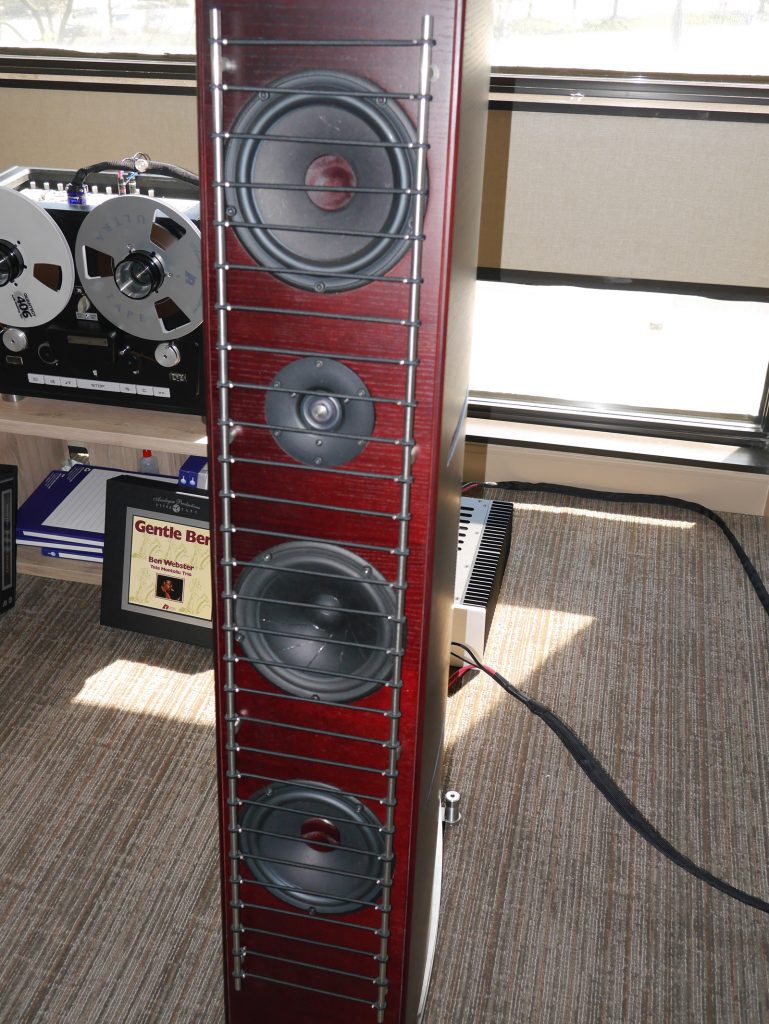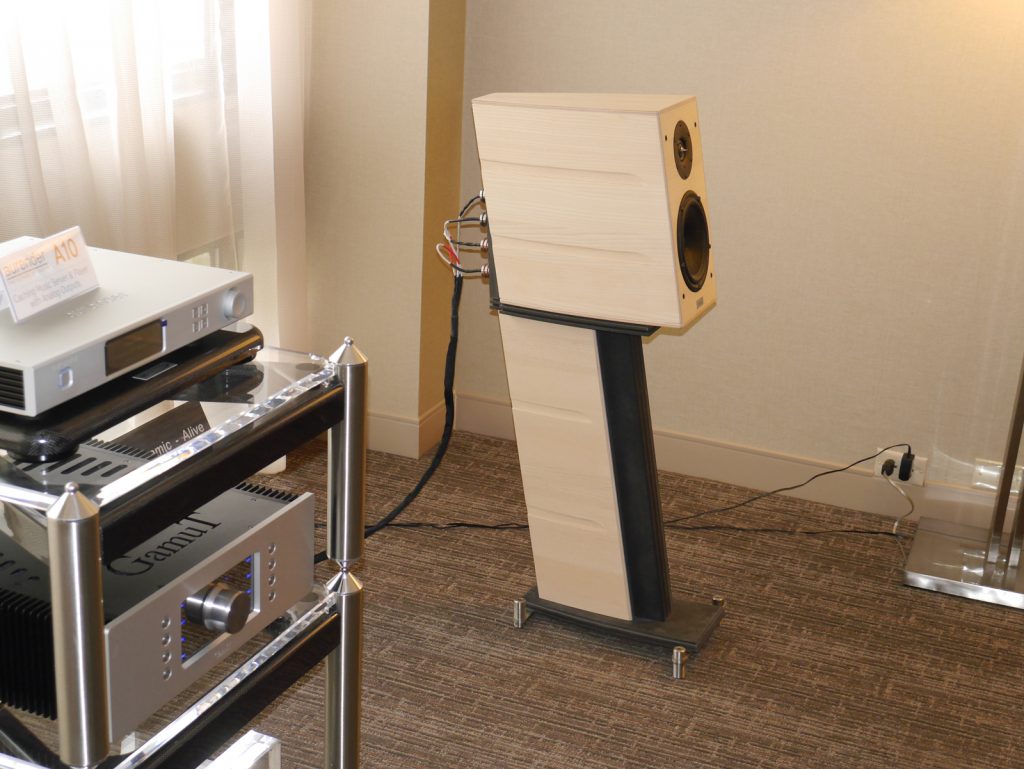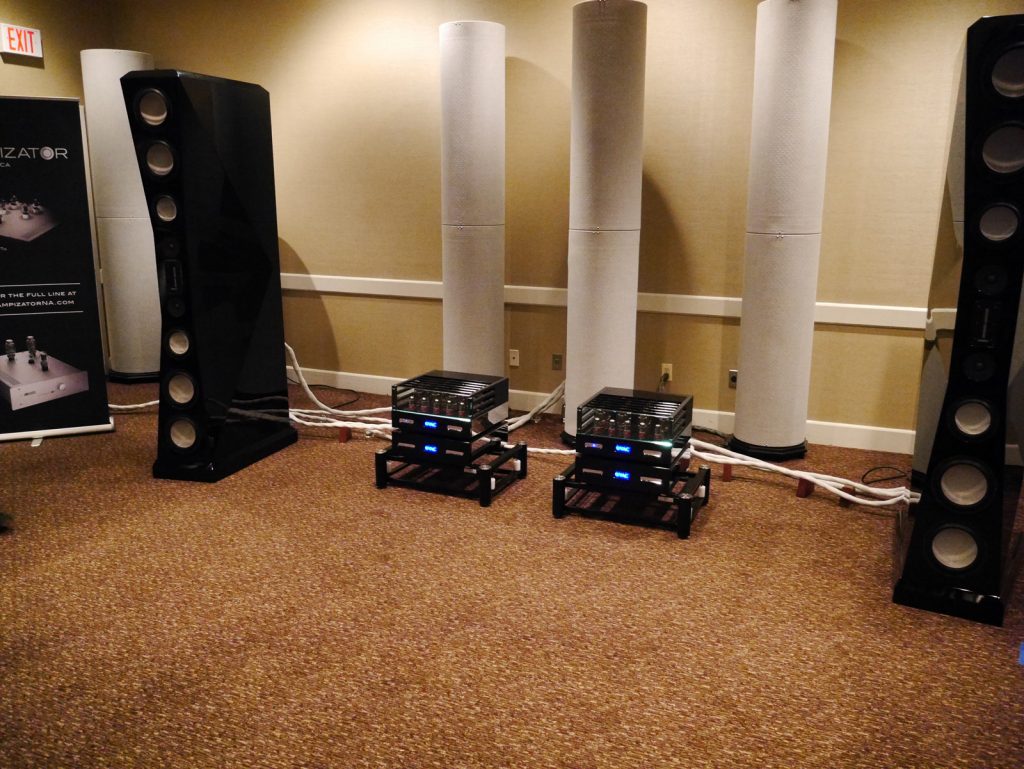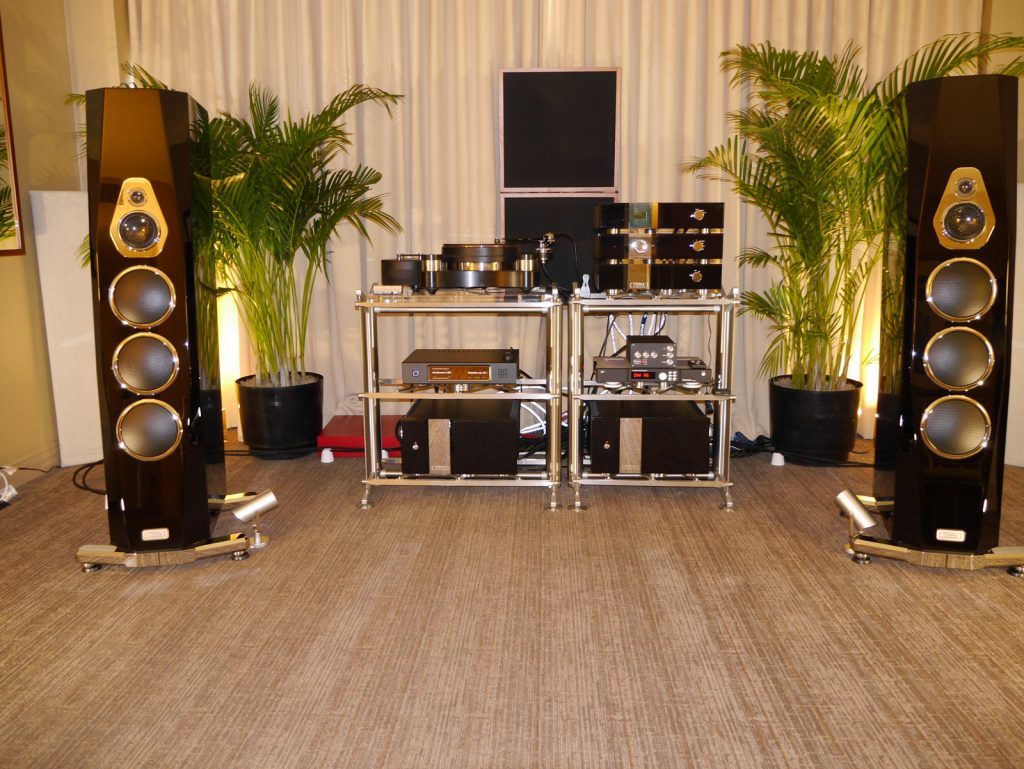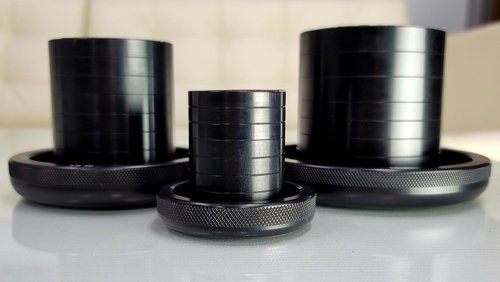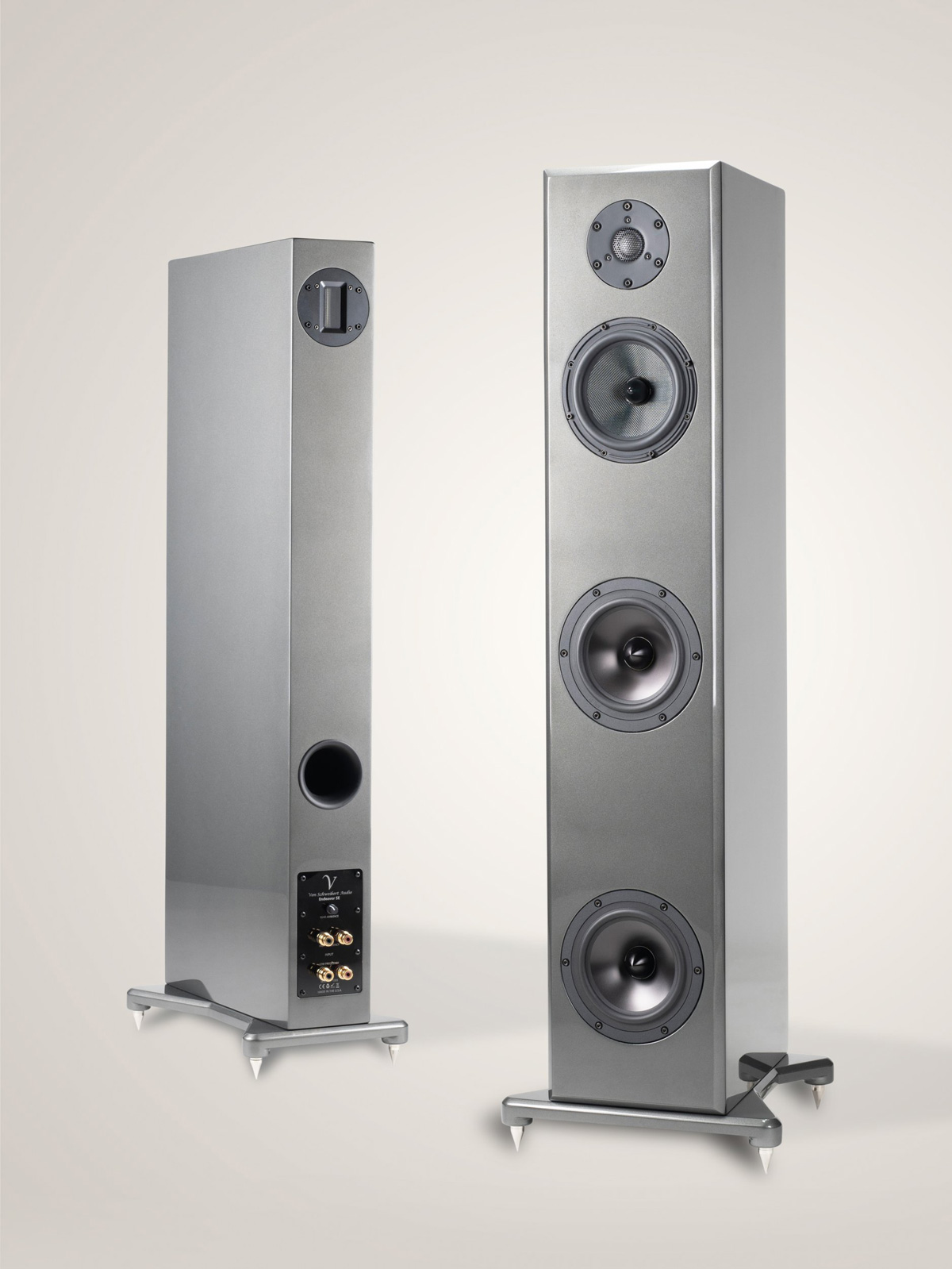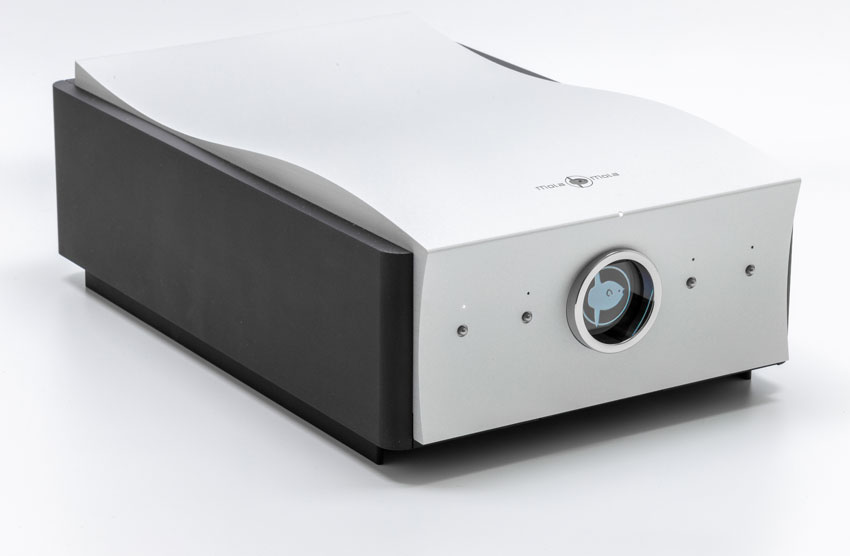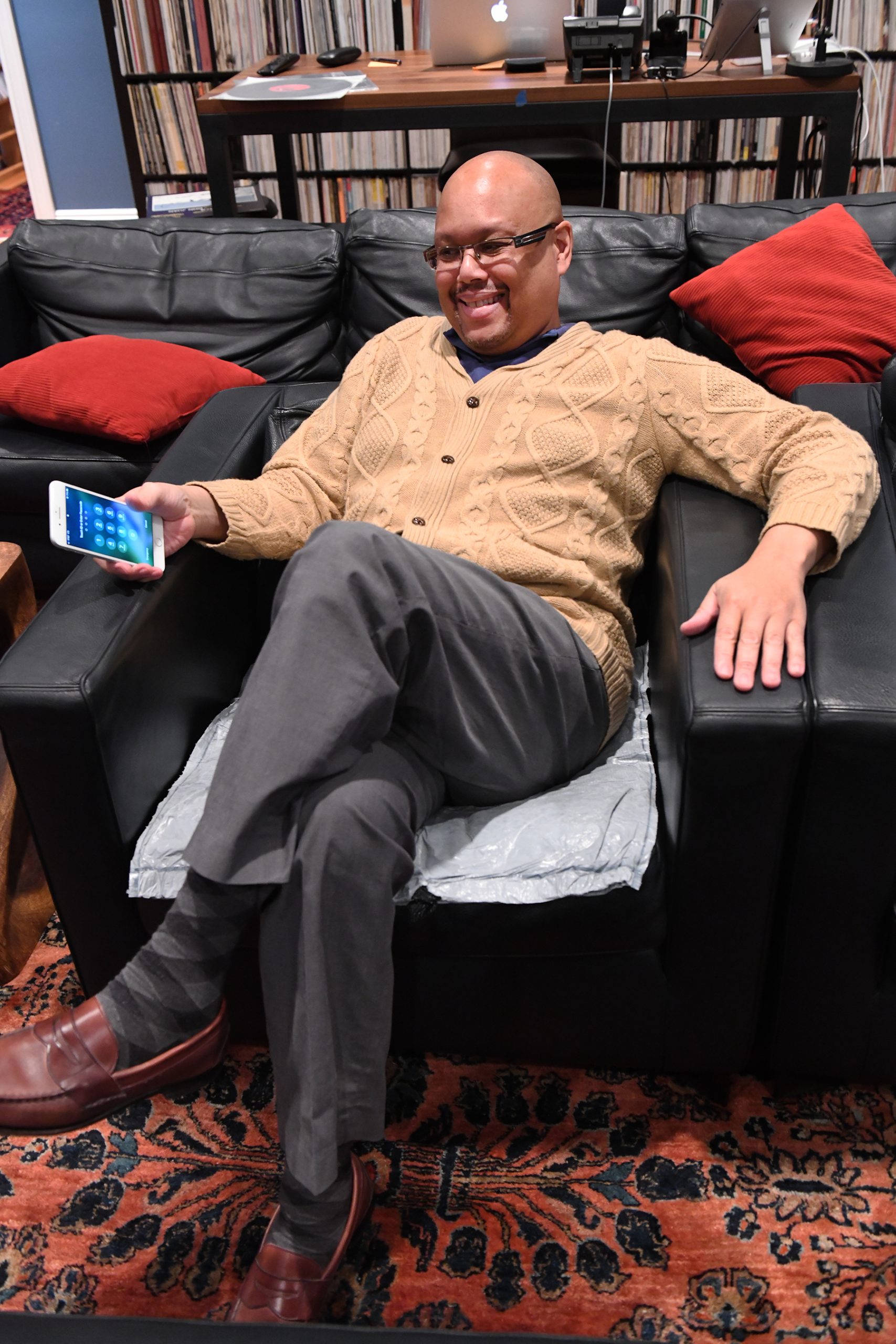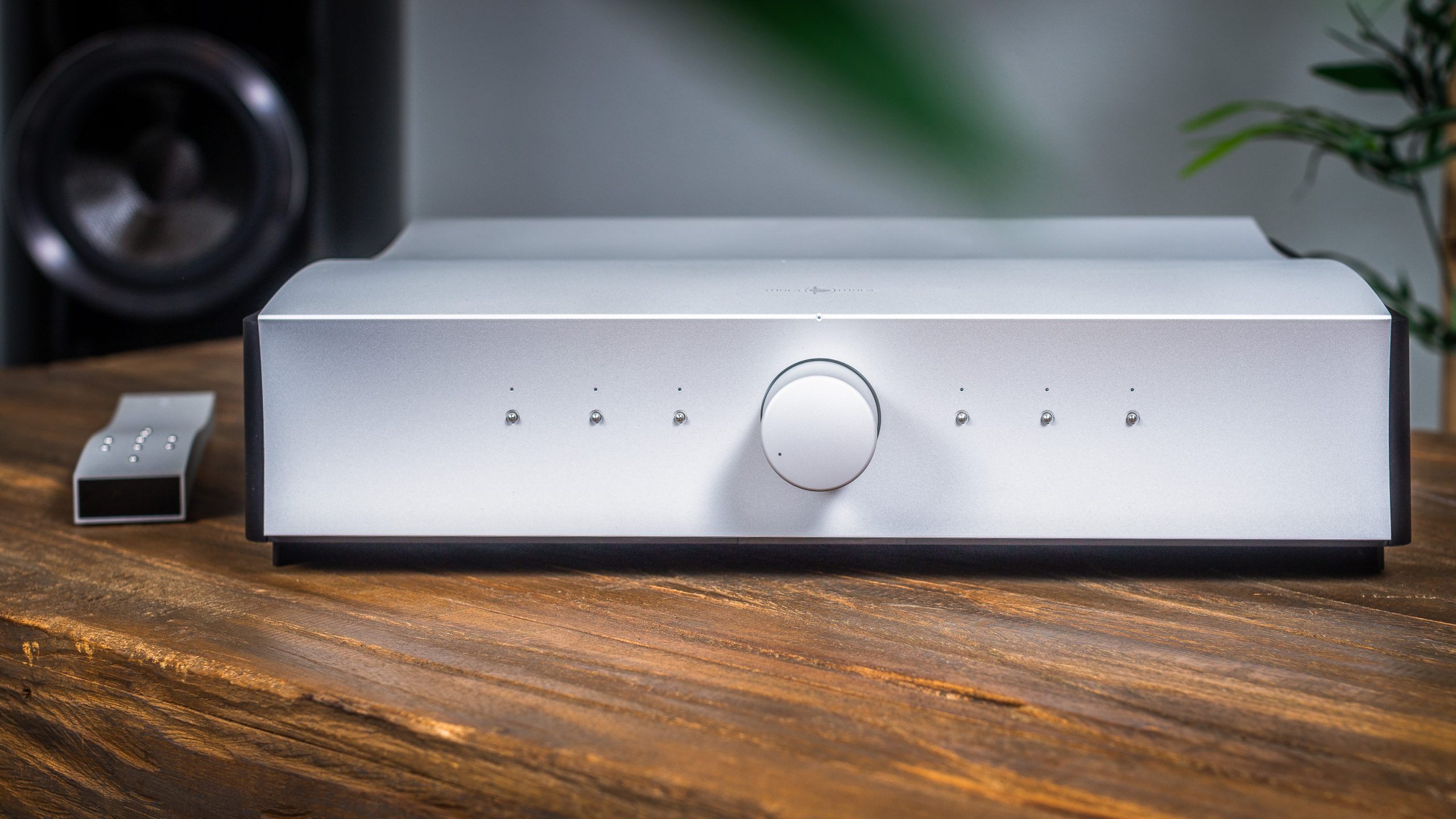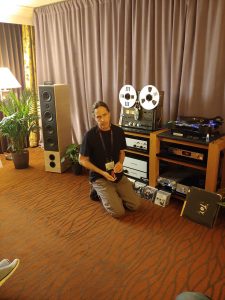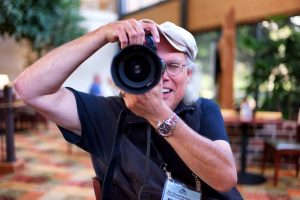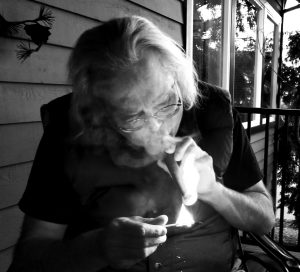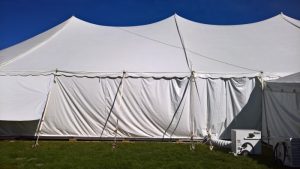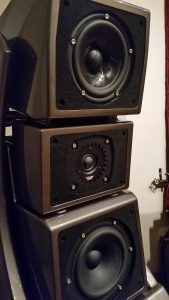Devices and Desires: The Best of the Best at AXPONA 2017
Without question, last weekend's AXPONA show (April 21-23) in Rosemont, Illinois ranks amongst the best sounding AXPONAs in recent memory. Not since the show's rebirth at the Doubletree by Hilton O'Hare in 2013 has the Chi-town cavalcade boasted such superb sound quality overall. Yes, the Westin remains the superior venue for organizational purposes (and with much better food and amenities, at least IMHO), but the Doubletree stood out for its unexpectedly great sounding rooms.
This year, the sonic differences between the two venues more of less vanished. What changed? In a nutshell, more and more manufacturers, retailers and distributors (but not all) wised up and en masse appeared to pay closer attention to proper speaker placement (including room size-speaker size interactions) and room treatment considerations. The result sounded to my ears—and to other listener's ears as well—like a wholesale improvement in show sonics.
This year's show was also bigger, bolder, and at least as well organized as past Westin gatherings, which proved a mixed blessing. On the plus side, floors 2-6 were packed with interesting exhibits, many quite outstanding, while the 12th floor once again played host to some bank account-busting mega-systems. The Lower and Lobby Levels also housed a generally superb mix of exhibitors. The downside: some outrageously long elevator waits, some annoyingly long waits to get into popular rooms, and some even longer restaurant waits (and was I the only one to notice that the food in the hotel restaurant wasn't quite as good as we have come to expect?). One came away with the overwhelming sense that while AXPONA had finally grown up sonically, the show had simultaneously outgrown the Westin. Indeed, 2017 marks the end of the largely successful AXPONA-Westin run. Next year's show will relocate to The Renaissance Schaumburg Hotel and Convention Center.
As the title suggests, this summary hi-lights the components, accessories and trends (the devices) that made this outing memorable, the devices themselves all too often becoming the objects of intense desire. Some familiar themes resurfaced. Vinyl's health - at least within the high end—was apparent in too many rooms to note here, with especially fine showings from VPI and Kronos (I counted at least five Kronos tables at the show, and at least as many VPIs, if not more). TW Acustic and Acoustic Signature turntables also turned in fine appearances in several rooms.
By contrast, digital servers and DACs continued to close the gap between analog and digital, but good luck if you were expecting each room to have a CD player on hand. These are becoming as rare as Elvis sightings. Several exhibitors went so far as to declare CD a dead medium. Also noteworthy were the exhibits that featured only analogue or digital sources, but not both. While I made no attempt to tally the raw numbers, those exhibitors willing to stake out stark positions in either the analogue or digital camps stood out this year, at least they stood out to me.
On a personal note, let me give a shout out to Greg Weaver and John Tabernacki, who were my partners in crime for a good part of the show. Hopping from room to room with these two made the AXPONA experience much more enjoyable. Amazingly, each of us tended to agree on which rooms shined, which rooms didn't, and why. It was a pure joy to hang out with two industry veterans who clearly know their stuff. Finally, kudos to our own David Robinson who I finally got to meet face-to-face. David and I really hit it off over drinks and dinner Saturday night. To say that I am honored to count him as both Editor and Chief and friend is a profound understatement.
And now, on with the show.
My (Almost) Best of Show Choices
IMHO, the most neutral sound at the show - and by a considerable margin - came from the Sanders Sound Systems team. Their system consisted of Sanders' superb Model 10e ESL/dynamic woofer hybrid speaker system, powered here by, you guessed it, Sanders' crystal-clear Magtech amplifiers ($17K for the speakers and an amp—the second will set you back an additional $5K). The utter absence of low-level colorations and distortions resulted in the most transparent, holographic and captivatingly neutral sound of any room I visited. Tonal accuracy seemed spot on. Regardless of musical genre, the Model 10e speakers and Magtech amps captured the inherent beauty of instruments, voices and their attendant acoustic settings in a wholly engrossing way. Integration of the ESL panel with the dynamic woofer sounded seamless to my ears, with crisp timing and propulsive dynamics. I'm gonna go out on a limb here and posit that this superb little number ranks amongst the most transparently neutral transducers on the fracking planet!
If you don't have the room for electrostatics (pure or hybrid) but value top-flight sound, then brohim, have I got a speaker for you. Apart from earning my pick for overall best small speaker at the show, the stellar Magico S1 Mk. IIs ($16K/pair) are just plain great, size and cost notwithstanding. Paired with CH Precision's new I1 Universal Integrated Amplifier ($38K plus options) and magnificent D1 SACD/CD Transport/Player (also $38K plus options), the tiny Magico's disappeared sonically, creating a broad, deep, and serenely stable soundstage. Stage height cues couldn't match that of the larger Magicos (or ‘stats for that matter), but were impressive nonetheless. On an LP version of Simply Red's Picture Book (Elektra), British crooner-extraordinaire Mick Huknall's rendition of Holding Back the Years sounded incredibly sweet, airy, articulate, and lifelike (played back through a Kronos Sparta turntable/arm combo with Kubotek cartridge, no less). BTW, this was the world debut of the outstanding I1 integrated amp. To my ears, the CH Precision room was clearly a best of show (BOS) candidate.
The nextest-bestest small speaker at the show, TAD's diminutive Micro Evolution Ones (with a coaxially-configured mid-tweet driver assembly and Aramid woofer at $12,495/pair—better even than the Magico's S1s in the critical midrange, if only by a hair IMHO), melted walls and infused Mofi Distribution's small listening room with surprisingly robust sound. TAD electronics (the C2000 preamp and M2500 power amp, BAT phono stage - $29K, $24K, and $9.95 K respectively), Dr. Fieckert Analogue Blackbird table ($9485 with Jelco arm), Koetsu Urushi Sky Blue Vermillion MC cartridge ($5995), and a loom of Isotek cables and conditioners (including the new and intriguing Mosaic Genesis AC Regenerator at $9995) allowed the Micros to recreate the touch and feel of Carlos Santana's Black Magic Woman from Mofi's Ultra Disc One-Step LP reissue of the artist's Abraxas (MFSL45UD1S-001). From my notes: "Wonderfully open and pure. Tonality a touch on the light sound perhaps, but stunning articulation and coherence. A genuine BOS contender."
Sticking with my smaller-is-better mantra, Vinne Rossi, Triode Wire Labs, and the good folks at Fidelis turned in another quality outing this year. Powered by a Lio hybrid amplifier (here in its "Super Integrated" $11,675 configuration and outputting a "scant" 25 wpc into 8-ohms), the new Harbeth Super HL5 Plus "40th Anniversary Edition" speakers (from Fidelis) soared to uncommon musical heights. Sounding superbly musical, detailed (but not exceedingly so), and oh-so relaxed, the Harbeth's pulled you into the performance. Greg Weaver, who joined me for the ride, put it best: the Harbeth's make you forget about audio and force you to focus on the music and the performance. The "40th Anniversary" 5s are available this year only in a gorgeous walnut finish. They feature an improved super-tweeter, WBT-Nextgen binding posts, and upgraded poly crossover capacitors ($7495/pair). Fine and affordable front-end gear from Germany's Acoustic Signature (also courtesy of Fidelis) rounded out the mix (here an Acoustic Signature Wow XXL turntable ($3495) paired with the AS TA-700 tone arm at $1295 and the $850 AS Black Cartridge - MC I assume).
Offering value and sonics to rival the Fidelis/Rossi suite, but using only digital sources, exaSound's affable chief George Klissarov once again knocked the ball out of the proverbial park, and for a total system tariff far less than that of some exotic turntables. With scarcely a turntable or phono stage in sight, George coaxed reference-caliber sound from the Magnepan 3.7i planar speakers ($5995/pair), driven here by the quite affordable Parasound A21 Class A/B power amp ($2,500) and exaSound's PlayPoint Network Audio Player ($1999) and e32 DAC ($3499 in the two-channel configuration). Smooth, dynamic, open and exceptionally coherent, the sound just hung in space. If you have the room and the power, it's hard to beat the Maggies for sheer realism and presenting power. Look for a review of the exaSound gear soon!
At a higher price-point, Martin-Logan's ESL 15A Renaissance hybrid system (complete with Anthem's proprietary ARC room correction software, state-of-the-art DSP processing, and dual Class D-powered dynamic woofers, all priced at a stiff but not unreasonable $25,000/pair) sang coherently and forcefully on the tail end of a reference system powered by a lovely stack of gorgeous and gorgeous sounding Constellation Revelation Series electronics. This marked the first public demoes of Constellation's new Revelation Series components. Analogue source duties fell to the delicious-looking and sounding Continuum Audio Labs Obsidian turntable and matching Viper tonearm (around $45,000 for table and arm; Ortofon A-95 cartridge/$6,500) and the Constellation Andromeda Phono Stage ($18K plus $5K for the optional DC Filter). The gorgeous Pictor Preamp ($18K) and Taurus Power Amp ($19,500) rounded out the elctronics side of the equation (along with a loom of MIT cables). My woefully incomplete iPhone 7 notes read simply: "Superb transparency, but with body, delicacy, air and punch. The Constellation Revelation series [amps] and ML Renaissance speakers [are] a BOS contender." Irv Gross, the firm's VP of sales and mister all-things-Constellation stateside, and I plan to discuss a review of these superb amps as soon as possible.
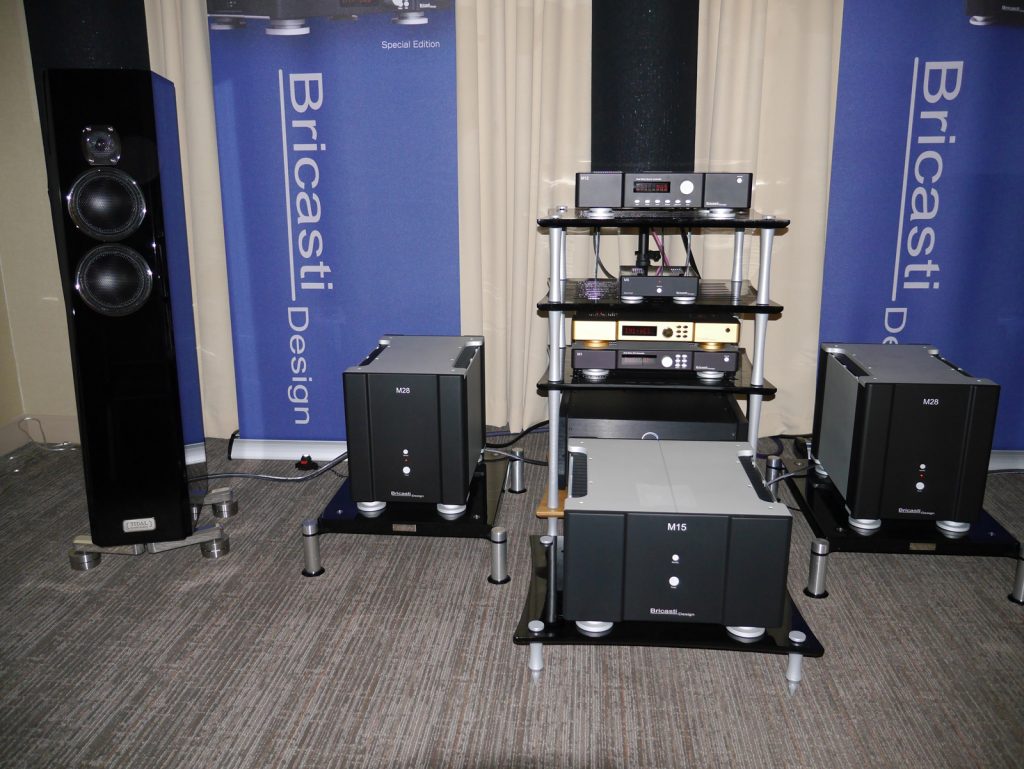
Tilling the same rarified soil (at least price-wise), Brian Zolner, Bricasti Design's head honcho, showed off a gaggle of both established and new products. Eschewing both vinyl and tape in favor of an all-digital source lineup, Brian nevertheless managed to make real music with electrifying immediacy, stunning transient fidelity and class-defining articulation. The newish M12 Dual Mono Source Controller ($15,995), the Limited and Special Edition M1 DACs (15 and 10K respectively), a brace of M28 mono-block amps ($28K the pair), and a very new M5 Network Player (a steal at $2K), drove a pair of Tidal Piano Diacera speakers (around $40K/pair - ouch) to stunning effect. On the fly, Brian effectively demonstrated the difference between pure DSD and DoP playback. Through the former, Norah Jones' Burn from her fine 2016 release Day Breaks (Blue Note B01J81LH4E) sounded deliciously 3D and airy. The air vanished and the stage collapsed when Brian switched to DoP. Another BOS selection.

Equally convincing, but this time using only analog sources (although a Marantz disc spinner was available for those so inclined), the Skogrand Cables/Modwright/Daedalus room down on the Lower Level earns my "most elegant sound at the show" designation. Fronted by a VPI Prime Signature turntable (finished in a delicious African rosewood/$6500) and matching 3D printed tone arm (the "fat" version if memory serves) and Modwright electronics (including the phenomenal PH 150 tube phono stage - $7800), all driving Daedalus Audio's svelte Apollo loudspeakers (around $11,000/pair), this multinational confection produced the sweetest, purest, most liltingly effervescent sounds I heard all weekend. The Hoff Ensemble's Quiet Winter Night: An Acoustic Jazz Project (2L B008P76VSA) LP sounded preternaturally pure and realistic. A BOS presentation? You betcha!
For those with smaller budgets, MarkAudio SOTA's Cesti B stand-mounts ($1895/pair plus stands) sounded convincingly open and lively, with fine transient attack, good linearity, and solid bass extension. The larger Cesti Ts on the other hand, compact floor-standers finished in high-gloss pearl white ($3495/pair), sounded scrumptiously confident. Wonderfully articulate and open, with quicker transients than the Bs, and boasting excellent driver integration and overall coherence, they captured David Bowie's end-of-the-road angst on Blackstar and Keith Jarrett's plaintive harmonies on ECM's superb At the Blue Note, Disc 1 (both CD versions) with real panache. Both speakers utilize MarkAudio's full-range, low mass alloy drivers, 2d order crossovers, and handsome cabinetry finished in stunning automotive paint choices (red and pearl white presently, with more options possible in the future). Greg Weaver couldn't believe his ears, and neither could I. We also both agreed that the speakers sounded better with the tweeter assembly positioned at or near ear height, i.e.,when placed on 10 to 12 inch stands. A review is forthcoming. BTW: electronics comprised a Parasound P5 preamp, Jolida hybrid integrated, and Marantz CD player (no prices listed in my notes). A friendly note to all exhibitors: please provide spec and price sheets for your rooms!
Rounding out my affordable BOS contenders, Scansonic HD demoed its affordable MB-5s, 2.5- way floor-standers with carbon-coned mid-woofers and a sealed ribbon tweeter ($6950/pair). Designed by Raidho's legendary Michael Børresen, powered by Aavik Acoustic's ne plus ultra integrated amp (around $30K with options), and sourced by Naim's CD5si player (no price listed), the MB-5-based system peeled the paint off the walls, delivering sternum-crushing dynamics, sky- high extension, and holographic staging. Not cheap—particularly the amp—but boasting real authority, control and electric musicality. I'd love to get a pair of these beauties in my listening room!
Last, but certainly not least in my "regular" BOS group, GamuT's all-analogue set up featured a Pear Audio Blue Kid Thomas turntable with Cornet 2 tonearm ($7995) with optional power supply ($1995), Ortofon Cadenza Black cartridge ($2729), and Pear Audio Blue Reference phono preamp ($4495); GamuT-refurbished Revox RTR player; GamuT M250i monoblocks ($25,990/pair) plus reference cables; and RS7i speakers ($39,990/pair) per pair; and Gamut cable loom).
I felt that this year's system sounded more harmonically complete and involving than last year's set-up. Highs were sweet yet see-through transparent. GamuT's Michael Vamos and Benno Baun Meldgaard were the epitome of charming, knowledgeable hosts. Gentle Ben Webster on Analogue Productions' superb RTR tape reissue of Gentle Ben (AP Ultra Tape No. RRAP-0002) transfixed all in attendance. Snare and high-hat swirls were crystal-cut, airy, 3D slivers from heaven.
My BOS Choices: The Ne Plus Ultra Exhibits
My joint BOS picks in the ne plus ultra category ticked all the right sonic boxes for yours truly. Admittedly, both systems spoke with highly distinct voices (one a bit more "yang" than "yin", the other a model of introspective elegance). But when they spoke, they did so with such consummate authority and conviction that one really was reminded of the sound, texture and scale of the real thing. I'm also convinced that what each room offered in terms of sheer sonic realism and overall impact, they offered better than any other rooms I visited, and likely those I didn't. Granted, I didn't hear everything—no one did—but I'm willing to bet that none showed a genuinely clean set of heels to my top two choices for 2017. Prices for both rooms were predictably exorbitant, but you gets what you pays for in the high-end, and what your hard earned scratch can buy sounded as real (and magical) as anything I have ever heard.
The Von Schweikert Audio/Valve Amplification Company exhibit in the Dearborn Room defied gravity and the laws of physics, producing the most outrageously bombastic, drama-filled sound of the show. For sheer scale and impact, nothing else in my AXPONA 2017 experience came close. Yet, when called for, smaller scaled fare sounded just as convincing. Tympani and kettle drums thundered on Myles Astor's copy of the famous Center Stage LP—reissued by Chad Kassem and team—but with textures and tonal shadings reproduced fully intact. A cut from Roger Waters' 1992 release Amused to Death (a Lord Gregor of House Weaver recommendation) transformed the palatial Dearborn Room into a virtual 3D sonic cathedral.
This drool-inducing set-up challenged one's expectations of what an ultra-high end system can do, and what such performance costs. At 900+ lbs. per side and over seven feet tall, the VSA ULTRA 11 speakers ($295K/pair in your choice of automotive paint finishes) towered above everyone and everything. They reproduced bass instruments with concert level impact below 20Hz (this was bass you heard and felt). Highs soared to infinity yet never shouted. Grain was utterly absent from the proceedings. A Kronos Pro turntable ($38,000) with SCPS-1 power supply ($13,500) and Black Beauty tonearm ($8500) spun vinyl with serene precision and authority (along with a ZYX Audio Ultimate 4D cartridge - $4400). Analogue duties were also handled by a rebuilt Technics 1520 RTR deck (J-Corder - $14,000). VAC electronics expertly powered the towers—here a Statement Phono Stage, Line Stage and Statement 450 iQ monoblock power amplifiers (priced at a staggering $80,000, $75,000, and $120,000 respectively—IOW, if you have to ask money!). The digital front end was similarly impressive and red ink inducing.
"Overall BOS? Probably yes" my notes read.
My other BOS pick in the ne plus ultra category provided, for me at least, a more introspective, soul-searching experience. While not as dramatic as the VSA/VAC room in terms of raw scale and grunt, it rivaled and perhaps bettered the former in its ability to capture the underlying dramatic tension and electric currents embedded in the music. If one were to equate the VSA/VAC experience to receiving a bracing splash of crystal-clear, ice blue water in the face in the early morning hours (the proverbial "wow" moment), then the Voice That Is/TIDAL Audio experience, my next pick, felt a bit like one feels when you wake up in the middle of the night and finally get—and I mean really get—what that difficult conversation you had with a close friend, lover or parent twenty years ago was all about (the proverbial "ah-ha, now I see" moment).
A pristine Malcolm Arnold LP (Lyrita) sounded simply superb, with stable 3D imaging, broad and deep staging, and supple micro-dynamic precision. Tonality boasted classic TIDAL values — liquid finesse but superior instrumental traction as well. The Akira's sensitively chosen partners in stealthy seduction included: TIDAL Audio Presencio Preamp ($77,000), Impulse Monobloc amps ($64,900), TIDAL Audio cables (varying prices), TW-Acustic Raven AC-1 Table and Raven 10.5 arm ($15.5K and $5.5K respectively), Transfiguration Proteus Diamond Cartridge ($10K), Bricasti M1 Special Edition DAC ($10K), Aurender N1o Server ($8.5K), Stillpoints ESS Racks and accessories, and a Signal Projects Poseidon S40 Power Conditioner ($9,995). I stopped adding figures at $300K. (BTW: Mr Voice That Is, the irrepressible Doug White, thoughtfully and graciously provided product details and prices on a tastefully designed 4" by 9" information card, this printed (on both sides) on heavy stock and gloss finished. The room's seductive lighting and subtle decorative touches made so many other rooms feel like, well, like repurposed hotel rooms).
I commented to Doug that the Akira's were the finest sounding TIDAL's I had heard to date and he didn't try to argue the point. If you have the scratch, this baby will cure your itch. From minimally recorded classical to densely layered, highly processed pop and soul, the Akiras revealed all, but in a seductively inviting manner that drew one into the recording and the recorded space. On cut after cut, the Akiras elicited from me that elusive "ah-ha" moment of clarity, that point in the performance where I felt I could genuinely divine the deeper intent of the musicians, recording engineer, and composer. Think of the Akiras as $219,000 time machines that defy the Laws of Physics by taking you back to the recorded event across multiple intersecting vectors. A stunning achievement (and my personal show favorite)!




